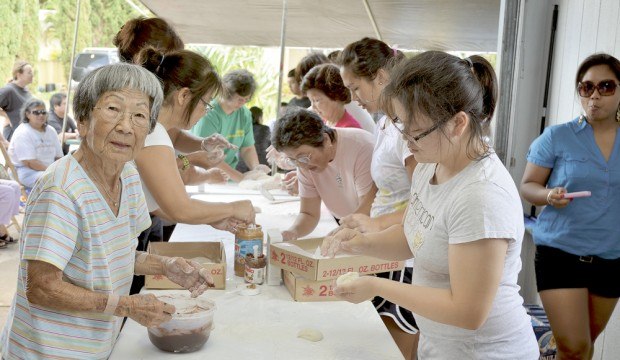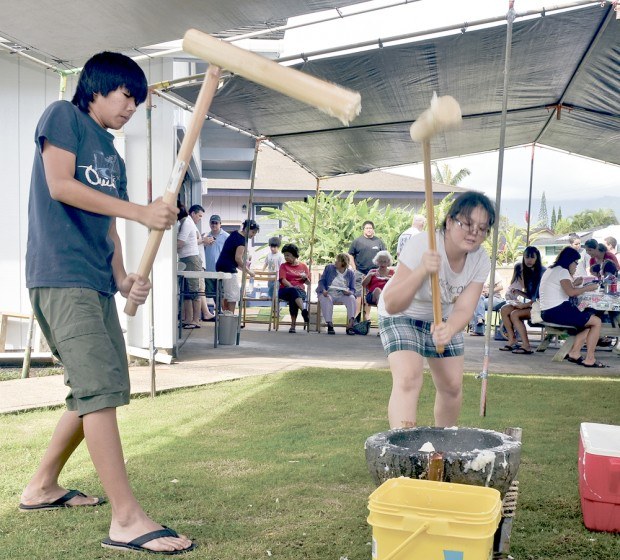WAILUA — James Yamamoto said the young people come because of what takes place after mochitsuki, or mochi pounding.
Yamamoto was one of more than 20 families, some coming from Honolulu and Maui, to participate in the annual Kawamura ‘ohana mochitsuki event.
Mochitsuki is an all-day event which requires many hands, long hours, and physical labor, but is also a time of fellowship and socializing with friends and family, the Japanese American National Museum website states.
The young people come, not only to take their turn at pounding mochi with specially created wooden mallets, or kine, but to socialize and enjoy a local favorite beverage.
Mochitsuki is essential to the oshogatsu, or New Year’s celebration, the JANM site states.
The process starts the day before when the mochigome, or special rice used to make mochi, is washed and left to soak overnight. Rice is cooked in seiro, or wooden steaming frames, over a large kettle of boiling water.
Alan Yamamoto had the task of monitoring the water from a central pot, ladling hot water into the usu, or stone mortar, between the batches of mochi.
“We’re advanced, now,” Ed Kawamura said, pointing out the aluminum steamers that stack three-high, and cooking over propane-powered gas burners. “In the old days, we had to chop keawe firewood and cook the rice in the wooden frames. Now, the wood frames are just in storage.”
Once cooked, the rice is dumped into the usu and the pounding starts following a session of grinding down the rice grains into a mass.
“I’m ‘one,’” said James Kawamura, announcing his place in the threesome wielding kine.
That signalled the start of the pound to the tempo of “one, two, three … one, two, three” until the mass is smooth with no signs of individual grains of rice.
Women take over as the mass is turned out onto the paper-covered table layered with mochiko, or sweet rice flour. Using their hands to “cut” the mochi into smaller portions, the ladies work to fill the mochi with azuki bean paste, peanut butter, or left plain to enjoy with a kinako mixture.
The finished mochi is used to create kagami mochi, one mochi placed atop another, serving as both a dwelling place of the god of harvest and an offering, according to the gojapan.about website.
Mochi is also an essential ingredient in the creation of ozoni, or a mochi soup cooked with vegetables and other foods and partaken as the first meal of the New Year. Ingredients in ozoni vary according to different regions in Japan, but mochi is always present, states the JANM website.
Consuming ozoni is considered “necessary” for ensuring a happy new year to come.



